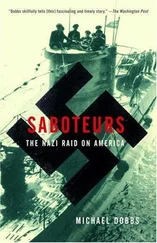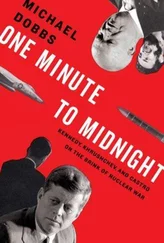“I ask you not to resist,” the voice continued, first in Lithuanian and then in Russian, as the tanks pushed aside a few small trucks and cars that had been blocking the path to the television tower. “I ask you to go home. Your parents, your mothers and fathers, your brothers and sisters, your grandfathers and grandmothers are waiting for you. Go home. Confrontation is senseless.”
The Lithuanian defenders stood their ground, shouting defiance at the approaching tanks. They had been expecting such a confrontation for several days now. Over the past week the Kremlin had stepped up its campaign of intimidation, dispatching thousands of paratroopers to the Baltic states to hunt down draft dodgers. Events seemed to be following a planned scenario. First, Gorbachev had dispatched an angry letter to the Lithuanian leaders demanding their allegiance to the Soviet Constitution. Then Soviet troops began seizing public buildings, gradually restricting the authority of the democratically elected Lithuanian government. They also took the precaution of disarming an elite Lithuanian antiriot squad, the only force capable of opposing them. Air and rail traffic, in and out of Vilnius, was halted. Finally, at midnight on January 12, a delegation of “workers” had attempted to deliver a petition to the Lithuanian government, demanding that it surrender power to the National Salvation Committee. The “workers,” many of whom reeked of alcohol, had been hustled away for questioning by nervous pro-independence activists.
At the time the incident seemed inconsequential. But the leaders of the shadowy National Salvation Committee needed a pretext, however flimsy, for appealing to the commander of the Soviet military garrison in Vilnius for “assistance.” This was it. Shortly after 1:00 a.m. armored columns appeared on the streets of Vilnius, prompting Lithuanian leaders to broadcast a frantic appeal to the population to defend strategic buildings like the television tower.
Rolandas Jankauskas was at a Vilnius discotheque when he heard the appeal. He had just turned twenty-two. He had left the Soviet navy two months previously, after completing his compulsory military service. Singing and laughing, Jankauskas and his friends poured out of the disco to see where the tanks were headed. At roughly the same time a twenty-three-year-old seamstress, Loreta Asanavičiute, ran into an old friend while walking home after a party. The friend asked her to go with her to the television tower, on Cosmonaut Avenue, where large crowds were beginning to gather. Impulsive and full of life, Asanavičiute immediately agreed. 19
Jankauskas and Asanavičiute were among the first Lithuanian victims of the attack on the television tower. He fell to the ground as the troops began advancing toward the tower, throwing stun grenades and firing shots into the air. Seconds later he was crushed under the wheels of an armored personnel carrier. Asanavičiute was one of several Lithuanians hit by a tank clearing a path for the advancing troops. The right side of her body bore the marks of caterpillar tracks.
After failing to disperse the demonstrators by firing over their heads, the Soviet attackers aimed their AK-47 assault rifles directly into the crowd. Seven of the eleven Lithuanian civilians killed during the assault on the tower were hit by bullets. Sporadic shooting continued in the vicinity of the tower for a further ninety minutes. That night, out of more than four hundred injured, a total of fifty-three people were taken to hospitals in Vilnius with bullet wounds. At Hospital No. 1, in the center of the city, there were horrific scenes of carnage: charred faces; crushed legs; ripped-out intestines. “Some of the things I have seen tonight made my hair stand on end,” said Dalia Steibilene, the doctor on duty when the fighting broke out. “We knew that this kind of violence was happening in the Caucasus, but nobody thought that anything like this would happen in peaceful Lithuania.” 20
Soviet officials later claimed that members of the crowd had opened fire on the Soviet army. But they failed to produce any evidence to support their assertion, and none of the foreign journalists at the scene saw any firearms in the hands of the defenders.
Spearheading the assault force was a group of thirty or so men in black helmets, their eyes shielded by bulletproof visors, who smashed their way through the plate glass windows at the base of the television tower. They seemed more organized and disciplined than the rest of the attacking force. They talked to one another constantly, via radio sets attached to the backs of their helmets. Once inside the tower, they moved methodically from floor to floor, pushing aside the barricades erected by the Lithuanian defenders and dismantling the booby traps. Their presence in Vilnius was meant to be a closely guarded secret. Within a matter of days it was to become a matter of nationwide controversy, and a serious embarrassment to their masters in Moscow.
MORE THAN A DECADE HAD PASSED since Yevgeny Chudesnov had taken part in the operation to overthrow Amin. He still remembered the fragrant aroma of shashlik, rising from hundreds of bonfires, as he drove through the deserted streets of Kabul that cold winter night. A veteran of the Alpha Group, he had become almost immune to the rattle of gunfire and the deafening sound of explosions.
If the KGB was the sword and shield of the Soviet state, the Alpha Group was the sword and shield of the KGB. Modeled on the British SAS and the American Delta squad, the two hundred or so members of the Alpha Group were superbly trained and equipped. These Soviet Rambos had extensive experience in freeing hostages, disarming terrorists, and storming buildings. Since the takeover of Amin’s palace in December 1979, they had carried out hundreds of delicate missions in different parts of the Soviet Union, achieving almost mythic status in the eyes of Kremlin leaders. The head of the Alpha Group reported directly to the chairman of the KGB. The force was the last line of defense for a Soviet Union threatened with disintegration.
Chudesnov and sixty-four of his colleagues had arrived in Vilnius after nightfall on January 11, on a special flight from Moscow. 21The following day they received their orders. They were instructed to seize control of three facilities: the TV tower, the radio transmission center, and the Vilnius television station. A Soviet army paratroop regiment would provide the necessary support. Chudesnov was put in charge of the subgroup that was to capture the television station.
There were large crowds of people standing around the television station, just as there had been at the TV tower. After catching his first glimpse of these crowds, Chudesnov had a fleeting hope that the operation would be called off at the last moment. 22The armored convoy drove past the television station, but then it turned back, and he and his men were ordered into battle. They jumped out of their armored cars and dived into the human barricade, throwing stun grenades. One of the stun grenades hit a twenty-eight -year-old Lithuanian defender in the chest, killing him on the spot. 23As the Alpha Group entered the building, a female announcer was broadcasting an emotional message to millions of Lithuanians.
“We address all those who can hear us,” she said, looking straight at the camera. “It is possible that the army can break us with force and close our mouths, but no one will make us renounce our freedom and independence.”
Seconds later Lithuanian television went off the air.
Chudesnov was running along the corridor of the television center when he heard a voice behind him. It was a young lieutenant, Viktor Shatskikh, a recruit to the Alpha Group. “Yevgeny Nikolayevich, I feel a pain in my back,” he murmured. When Chudesnov examined the wound, he saw that a bullet had penetrated a hinge in the lieutenant’s body armor, ripping open his right lung. He died shortly afterward. It was never established whether he had been shot by a Lithuanian sniper’s bullet, as the Soviet military later claimed, or friendly fire.
Читать дальше












